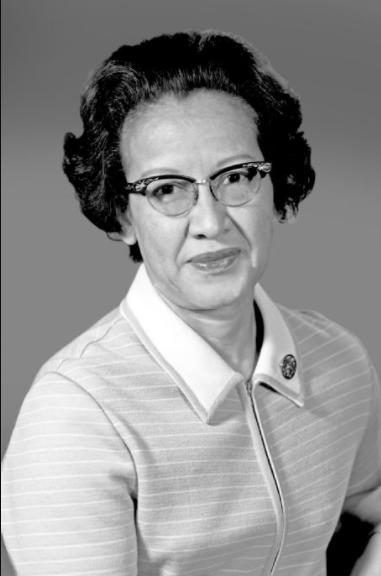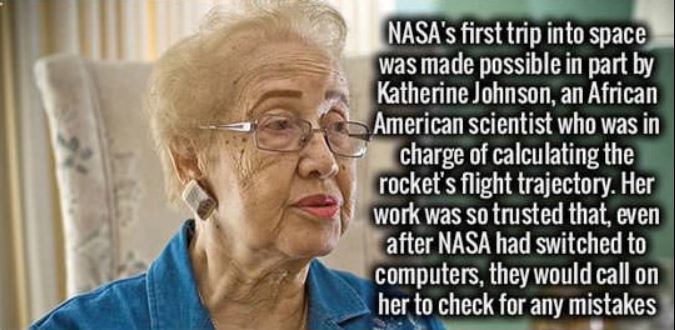
While they did the same work as their white counterparts, African-American computers were paid less and relegated to the segregated west section of the Langley campus, where they had to use separate dining and bathroom facilities. Get more great stories in the PopMech newsletter into the throes of war, NACA and Langley began recruiting African-American women with college degrees to work as human computers. Six months later, after the attack on Pearl Harbor brought the U.S. First he issued Executive Order 8802, which banned "discrimination in the employment of workers in defense industries or government because of race, creed, color, or national origin" (though it does not include gender). In June 1941, with war raging in Europe, President Franklin Roosevelt looked to ensure the growth of the federal workforce. and they didn't have to pay them very much," NASA's historian Bill Barry says, explaining the NACA's decision. In 1935, the NACA ( National Advisory Committee for Aeronautics, a precursor to NASA) hired five women to be their first computer pool at the Langley campus. While working six-day weeks at a job demanding "a large capacity for tedium," they were still expected to uphold societal norms of being a good wife and mother. Williamina Fleming, for instance, classified over 10,000 stars using a scheme she created and was the first to recognize the existence of white dwarfs. As chronicled in Dava Sobel's book The Glass Universe, these women were every bit as capable as men despite toiling under less-than-favorable conditions. In the late 19th century, the Harvard College Observatory employed a group of women who collected, studied, and cataloged thousands of images of stars on glass plates. Henson.įollowing the news of her death, the then NASA administrator James Bridenstine described Johnson as “an American hero”, adding that “her pioneering legacy will never be forgotten”.Women working as so-called "human computers" dates back decades before space exploration. In the film, which tells the story of Johnson and two other African American women – Dorothy Vaughan and Mary Jackson – who worked as NASA mathematicians during the space race, Johnson is portrayed by actor Taraji P. Johnson’s story was featured in Margot Lee Shetterly’s book Hidden Figures, as well as in the 2016 film of the same name. In 2016, NASA named a new computational research facility after her. Legacyĭuring her career, Johnson authored multiple research papers and received numerous awards and accolades, including the 2015 US Presidential Medal of Freedom, awarded by President Barack Obama. Johnson died in Newport News, Virginia, on 24 February 2020 at the age of 101. Her work helped the US become the first country to land a person on the moon on 20 July 1969. Johnson went on to join the Space Mechanics Division, where she calculated the trajectory for the 1969 Apollo 11 flight to the moon and worked on key calculations that helped synchronise the mission’s lunar lander with the moon-orbiting command and service module. “If she says they’re good, then I’m ready to go,” Johnson recalled the astronaut saying.

As part of the pre-flight checklist, Glenn asked engineers to “get the girl” – referring to Johnson – insisting that she run the numbers through the same equations by hand to check the computer’s calculations. The agency was relying on a network of computers, programmed with orbital equations that would control the trajectory of Glenn’s capsule. Less than a year later, NASA was preparing for the mission that would see Glenn become the first US astronaut to orbit Earth in February 1962. In May 1961, astronaut Alan Shepard became the first US citizen and second person in the world to go to space. Meanwhile, at NACA (which had since become NASA), Johnson had been working on the trajectory analysis for the US’s first human space flight.


In 1957, the Soviet Union launched Sputnik 1 – the first artificial Earth satellite – and in April 1961, cosmonaut Yuri Gagarin became the first person to journey into space and orbit Earth. At the same time, the space race between the US and the Soviet Union was heating up. Over the next four years, she worked alongside aeronautical engineers analysing data from flight tests. Within two weeks of working at Langley, Johnson’s talent landed her a position in the Flight Research Division. Johnson refused to use the “colored” toilets and ate lunch at her desk.

In addition to the computing pool, the toilets and cafeteria at Langley were also racially segregated at the time. In 1953, Johnson started working at the all-Black West Area Computing section of the Langley Aeronautical Laboratory at the National Advisory Committee for Aeronautics (NACA), which would later become the space agency NASA.


 0 kommentar(er)
0 kommentar(er)
